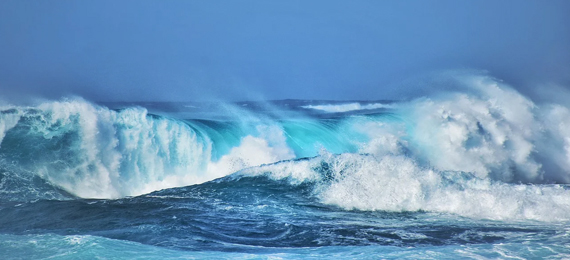
Oceans cover more than 70 percent of the earth’s surface. The deep huge ocean is home to several plants and wild animals. Plants in the sea produce around 70% of the oxygen we breathe. The animals that live in the ocean play an important role in our ecosystem. The ocean regulates the climate of our earth. It holds several benefits in order to maintain a balanced lifestyle. Introduction of plastic and population explosion are major reasons for marine pollution that led to several other problems. Currently, several countries are taking steps to reduce marine pollution. But predicting the future of the oceans is what can help us become aware. Here is an overview of the future effects of ocean pollution.
In recent years, many problems such as plastic depletion and fertilizer run-off have become modern issues. But research has shown that pollution cannot be the only problem.
Predicting the Future of the Oceans
- The effects of global warming have already been impacting the oxygen levels of the ocean. There are some anoxic areas in the ocean. Man-made fertilizers runoff from rivers may also create these areas. They can also occur naturally at intermediate depths in the ocean. These areas are called oxygen minimum zones. These anoxic areas are commonly found in the eastern Pacific Ocean and the northern Indian Ocean, the leader of the new study, Gary Shaffer explained. Currently, only 2 percent of the ocean is covered with these zones and they can be found at 500 meters depth. If the ocean water warms and becomes less soluble to oxygen, the anoxic areas might start to expand. The model projections show that coasts of Peru, Chile, and California might have greater effects. Many studies already show that the warming ocean waters are already affecting the ocean oxygen levels. In the future, the full effect of oxygen depletion might be felt.
When Is the World Oceans Day?
- A. April 8
- B. May 8
- C. June 8
- D. July 8
- If oxygen levels drop, the ocean water loses its capability to support marine animals. In anoxic areas, there might be a lack of nitrate which is a form of nitrogen. This sudden shift can majorly affect the biological production in oceans. Nitrogen is an essential nutrient for life. Without necessary nitrogen, it might be hard for fish and shellfish to populate. Therefore, the production of plankton species might increase as they can directly draw dissolved nitrogen from the water. This might lead to algae blooms. If the pollution is stopped, the fertilizer-fueled dead zones can be recovered but the anoxic areas might take thousands of years to recover. Reducing the fossil fuel emissions is claimed to be the only way to stop the problem, Shaffer said.
But positively, many studies say that the ocean could provide us with more food. This might depend on the extent of dietary and demand shifts. This also requires expanding sustainable marine aquaculture and reforming fisheries.
Why is it important to protect our oceans? All living beings on earth depend on water. The Phytoplankton present in the ocean produces about half of the world’s oxygen. Oceans are our present and future. Marine ecosystems are important for a balanced lifestyle. If any of our activities affect the marine ecosystem, it might indirectly affect us someday. We all must join hands to save our oceans. We might not make a sudden change but taking small steps can definitely reduce the time required for recovery. A time period of thousand years might decrease to hundred years with all our consistent efforts. Let’s make this earth a better place to live in for future generations. What will the ocean be like in 2050? Let’s all hope that by 2050, we have oceans that are cleaner with a better environment, anoxic areas might take less time to recover, oxygen levels are properly balanced, and global warming is gradually decreasing.